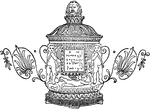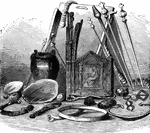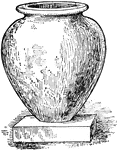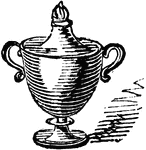Clipart tagged: ‘urn’

The Brook
The Brook is an engraving on a wood block that was created by Edward Calvert, an English printmaker…
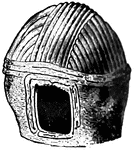
Clay Urn
A vase, ordinarily covered and without handles and usually has a narrowed neck above a footed pedestal.

The Hall of the Zollverein
Many intricate vases, urns and statues are on display in this hall. Several framed pictures dot the…

Neolithic Age Hut Urns
Neolithic age hut urns. The first drawing probably representing a lake dwelling. Not drawn to scale.

Greek Pot
A small vase of elegant form, resembling the oinochoe, but in general more slender with a raised handle.

Pygmalion
"The story of Pygmalion and his statue is in all probability an allegory. Pygmalion was a virtuous and…

Greek tripod
"When tripods are said to be given in a present, or as prizes, vases or large bowls supported on three…

Egyptian Urn
This Egyptian urn is shown here with two egyptians rubbing the urn. The urn was typically used in funeral…

German Urn
The German urn is a 16th century design made out of cut crystal. It is a small vase with a high foot…
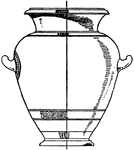
Greek Urn
This Greek urn is designed with painted clay. Typically used in funeral rites as a repository for the…
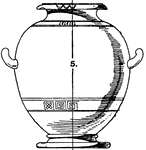
Greek Urn
This Greek urn is designed with painted clay. Typically used in funeral rites as a repository for the…
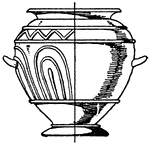
Grey Clay Urn
This Grey clay urn has ornamentation in its relief. Typically used in funeral rites as a repository…
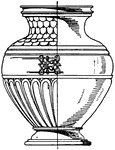
Majolica Urn
This majolica urn is a 15th century Italian Renaissance design made out of ceramic. Typically used in…
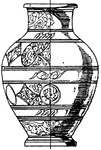
Majolica Urn
This majolica urn is an Italian 16th century ceramic. Typically used in funeral rites as a repository…

Modern Faience Urn
This modern faience urn is found is found in Bombay, India. It is made out of fine tin glazed pottery.…
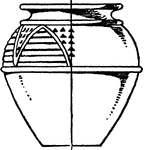
Prehistoric Urn
This prehistoric urn is a Gallic design. It was typically used in funeral rites as a repository for…
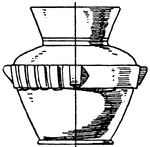
Slavic Urn
The Slavic urn is found in the district of Elbe and Oder in central Europe. Typically used in funeral…
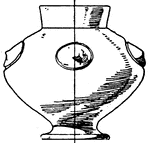
Slavic Urn
The Slavic urn is found in the district of Elbe and Oder in central Europe. Typically used in funeral…

Bottle Type Vase
The vase is an open container, often used to hold cut flowers. It can be made from a number of materials…
